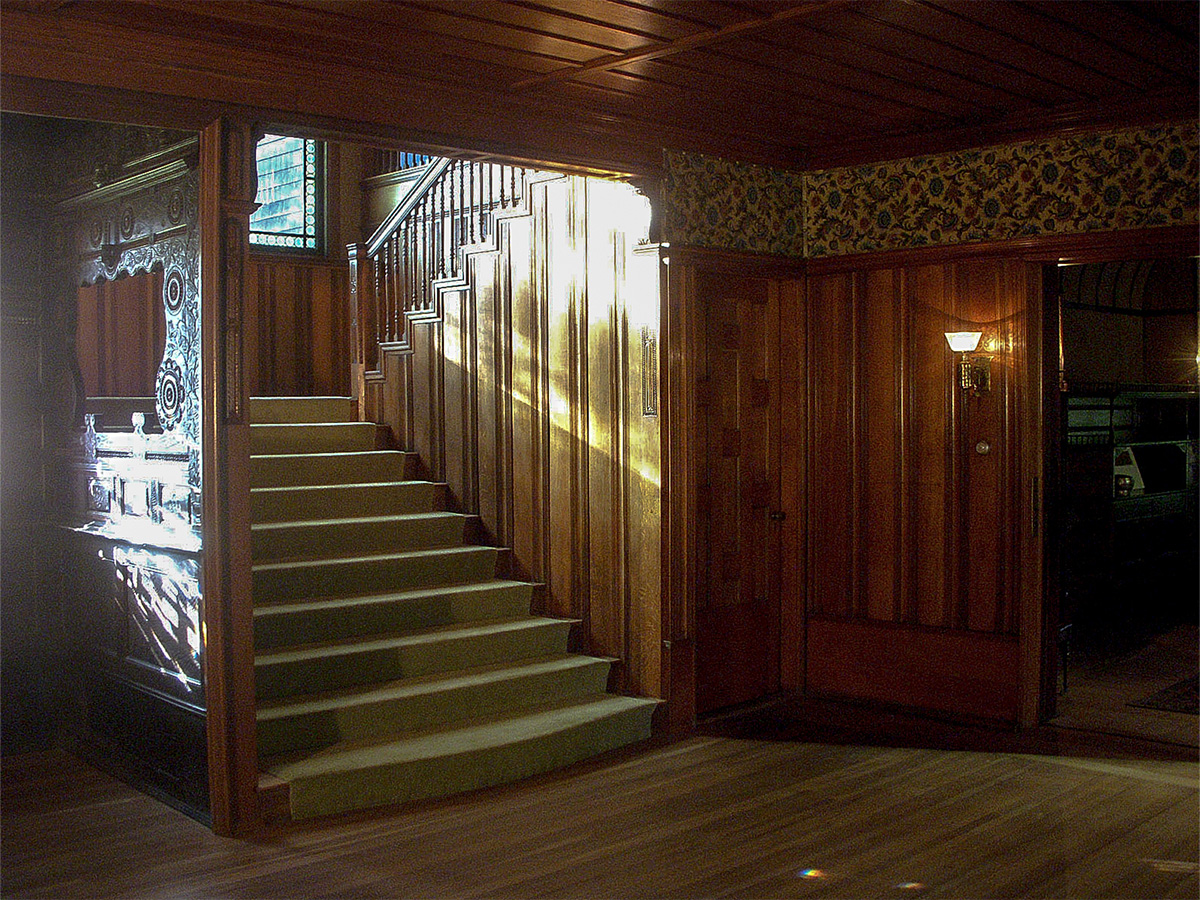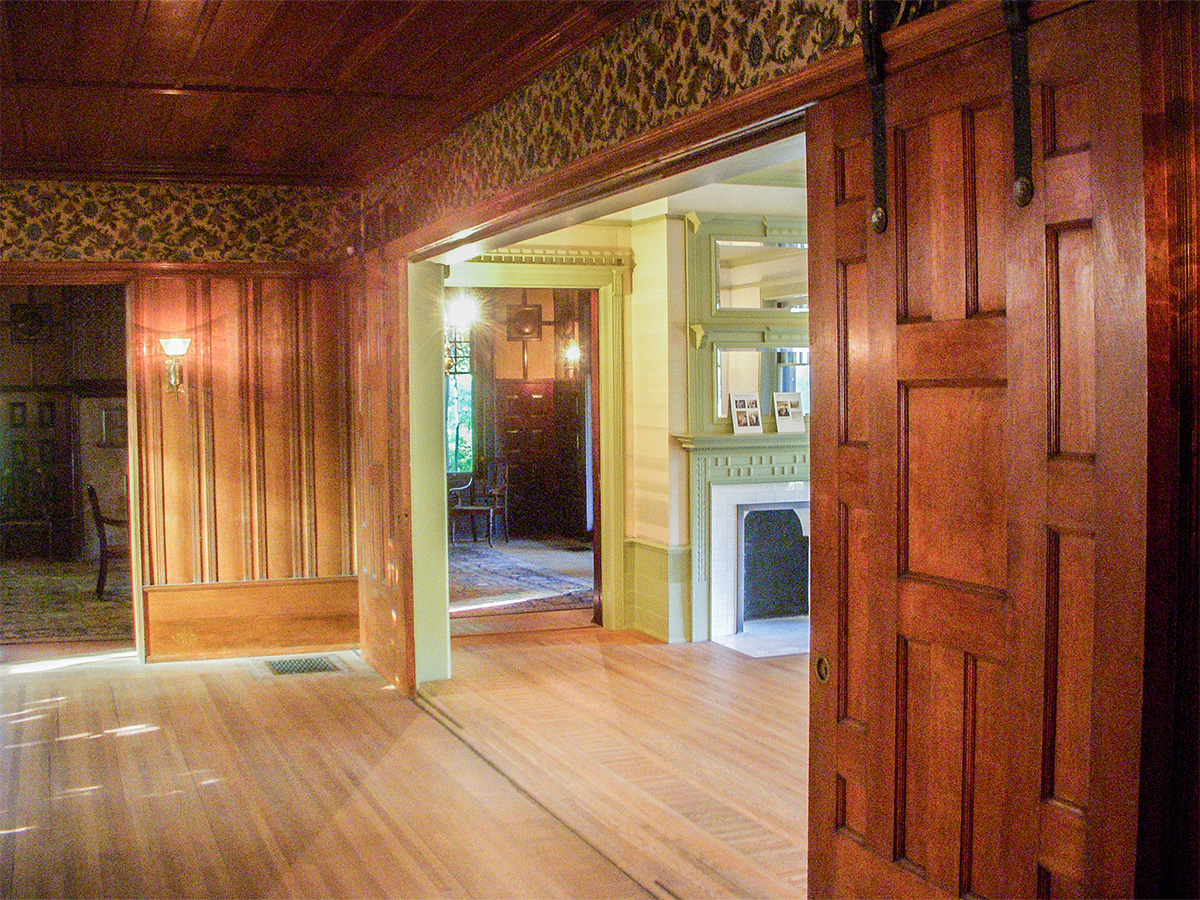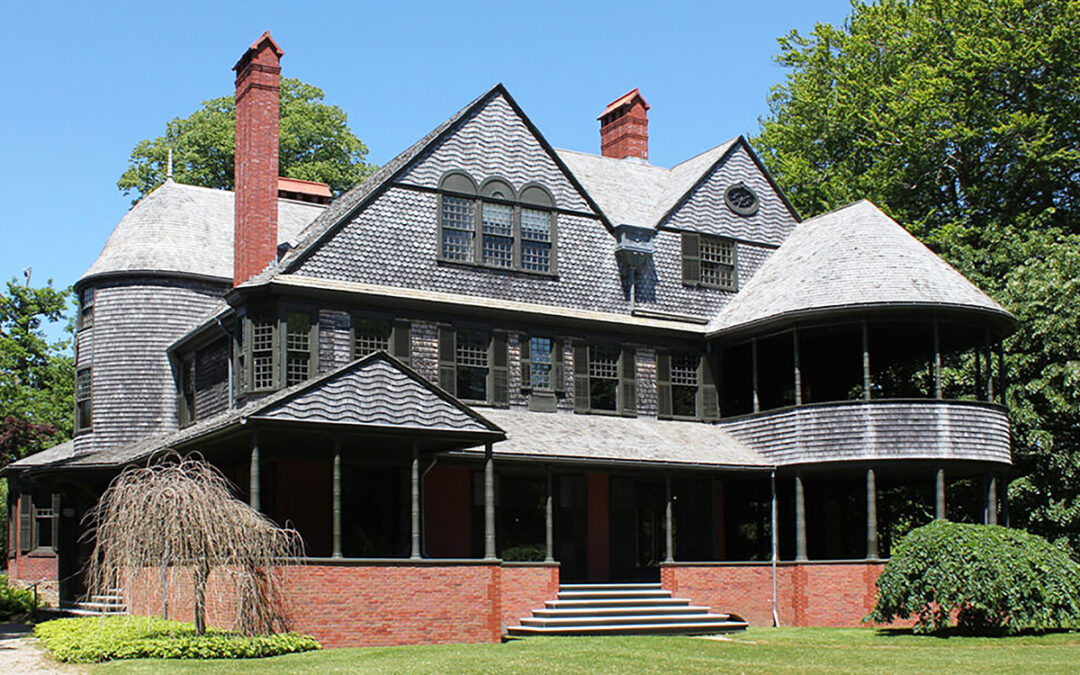Isaac Bell House
While the Isaac Bell House is a relatively modest building compared to the opulent mansions of Bellevue Avenue in Newport, Rhode Island which surround it, its historical significance is far greater than its size. This structure, originally called “Edna Villa”, was designed and built for the investor and cotton broker Isaac Bell Jr. by the firm of McKim Mead and White between 1881 and 1883. This firm, which was to become the largest and most successful firm of its era, had completed the design for the Newport Casino in 1880 for James Gordon Bennet, Bell’s brother-in-law. It is one of the earliest examples of the Shingle Style, which emerged from the earlier Queen Anne Revival style that was prominent and widespread through New England at that time.

Bell House First Floor Plan from Magazine “American Architect”
The design of the house is important for a number of reasons. It represented an early development of the Shingle Style, which was named by Yale professor Vincent Scully in a book by the same name, by the firm of McKim, Mead and White and by its talented young architect Stanford White in particular. It adopted features from Colonial Era buildings (like small paned windows), Richardsonian design (like a heavy rusticated stone base) and Oriental architecture (like dragons and bamboo styled columns). These inventive features marked the design as a fresh and expressive work of architectural art. Vincent Scully also noted that the pinwheel floor plan predated Frank Lloyd Wright’s use of this technique and hypothesized that this planimetric idea and use of Japanese themes may have helped inspire Wright through the publication of the design in magazines like American Architect.

Bell House Dragon Details
The house is filled with interesting innovations, like sliding doors which open the ground level space up, to windows which drop down into the basement allowing the interior living room and exterior porches to be joined seamlessly together for summer enjoyment and entertainment. The doubling of the width of the stair at the first landing creates a dramatic entry space for the ground level and serves to separate that area from the more private second floor bedroom areas.

Bell House Bamboo Columns
The open floor plan and bamboo-inspired porch columns offered a stark contrast to the traditional compartmentalized layouts and heavy ornamentation prevalent during the Victorian Era and Queen Anne Revival Styles. This embrace of simplicity and functionality aligned with the emerging Shingle Style are characterized by its use of unpainted shingle patterns, sweeping gables, surrounding porches and a greater focus on natural light and ventilation.

Bell House Interior Stair
Beyond its innovative design, the Isaac Bell House stands as a testament to the evolving tastes and social aspirations of the Gilded Age elite. Whereas previous and following generations sought to showcase their wealth through their over use of color and elaborate architectural decoration, the Bell House reflected a desire for a more relaxed and informal lifestyle. The use of natural materials and the emphasis on comfort over grandeur represent a subtle shift in social values.

Bell House Interior Sliding Doors
The significance of the Isaac Bell House extends beyond its architectural and historical value. It serves as a reminder of Newport’s architectural diversity. While the city is often associated with the opulent mansions of the Vanderbilts and Astors, the Bell House embodies a quieter elegance, highlighting the range of architectural styles that contribute to the city’s rich architectural tapestry.
Furthermore, the Bell House stands as a living testament to the enduring legacy of the Shingle Style. This architectural movement, pioneered by the Bell House, was short-lived as clients in Newport demanded grander and more traditional palaces like the nearby Elms and Rosecliff mansions. The elegance and simplicity of the shingle style spread slowly but widely throughout resort communities in the United States and continues to this day, gaining widespread popularity in the late 19th and early 20th centuries, influencing residential architecture across the United States. Its emphasis on practicality, natural materials, and understated elegance continues to resonate with architects and homeowners today.

Bell House Shingles
The Isaac Bell House was confirmed as a National Historic Landmark, the highest designation for an American structure in 1997. Today, the Isaac Bell House is part of the collection of the Preservation Society of Newport County and serves as a house museum, offering visitors a glimpse into the Gilded Age and the life of Isaac Bell. The meticulously-preserved interior, with its elegant woodwork and original features, transports visitors back to a bygone era. The exterior shingles have just been replaced in an exact replica of the original styles of shingles used when it was first constructed. Through its unique design, historical associations, and enduring style, the Isaac Bell House remains a captivating reminder of Newport’s architectural heritage as a place of architectural invention and as the place where the Shingle Style first emerged and rose to prominence
Looking to remodel your home? Let’s connect.
Join the Architectural Forum to stay up-to-date with architectural news from Rhode Island and abroad.
Ross Cann, RA, AIA, LEED AP, is an author, historian, teacher and practicing architect living and working in Newport, RI. He holds degrees in Architecture and Architectural History from Yale, Cambridge, and Columbia Universities. He is a Leadership in Energy and Environmental Design Accredited Professional.
At A4 Architecture + Planning we are expert at integrating building codes into our designs to provide safer and more long-lasting building solutions for our clients. If you are interested in learning more about what can do for you reach out to us at any time!

Great article and accompanying pictures about the Issac Bell house.Educational and informative.Thank you